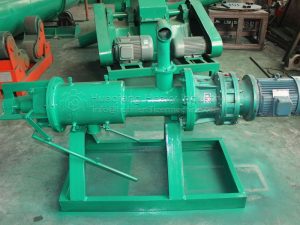The blender plays a key role in fertilizer production, whether it is an organic fertilizer production line, a variety of fertilizer production lines, or even the previous process of the fertilizer granulator, it is inseparable from it. So, how exactly does a blender work?

In the initial stage of the organic fertilizer production line, the mixer plays an important role in the initial mixing of materials. When all kinds of organic raw materials, such as livestock and poultry manure, crop straw, kitchen waste, etc. are transported to the mixer, the mixer starts to work through its internal mixing device. The stirring device is usually composed of a plurality of stirring blades or stirring rods, which rotate around the stirring shaft. In the rotation process, the stirring blade constantly cuts and turns the raw materials, so that the raw materials of different sources and different textures are fully contacted and interwoven, so as to break the physical boundary between the raw materials and achieve the initial uniform mixing. This uniform mixing is essential for the subsequent fermentation process, providing a consistent nutrient environment for microorganisms and promoting the efficient fermentation reaction.
In the fertilizer production line, especially in the stage of chemical fertilizer and organic fertilizer, the role of the fertilizer screener can not be ignored. At this time, accurate material proportion control is the key. Through a specific feeding device, the mixer separately adds different fertilizer raw materials in preset proportions. During the mixing process, its fine stirring action is used to ensure that all kinds of raw materials are evenly distributed at the microscopic level. For example, in the combination of nitrogen fertilizer, phosphate fertilizer, potassium fertilizer and organic fertilizer, the blender can make the nutrient elements evenly mixed to ensure that the nutrient content of the produced compound fertilizer is stable and meets the standards and requirements of fertilizer production.
For the material preparation before the fertilizer granulator, the blender plays a connecting role. It will further mix the raw materials after the pre-treatment, so that the particle size, humidity, density and other indicators of the material tend to be consistent, and create good working conditions for the granulator. Only in this way, the granulator can successfully press the material into fertilizer particles with uniform size and stable quality. In short, the mixer provides a solid foundation for the entire fertilizer production process through orderly material mixing and preparation.


